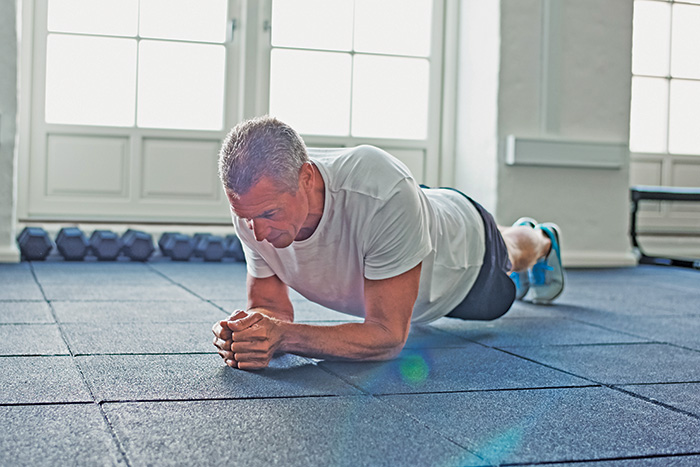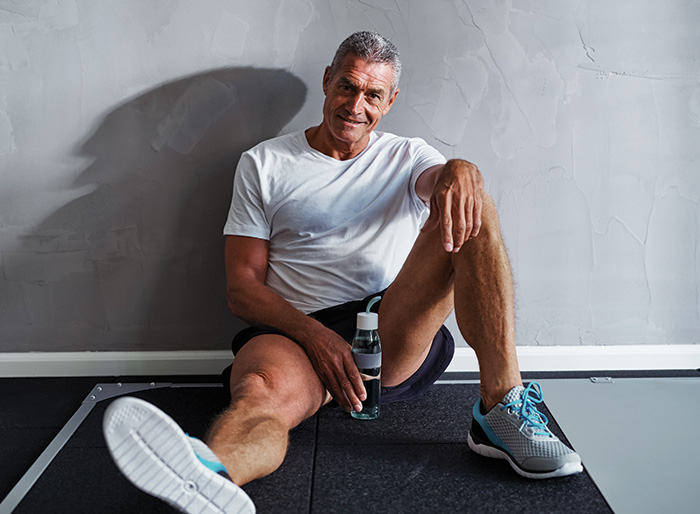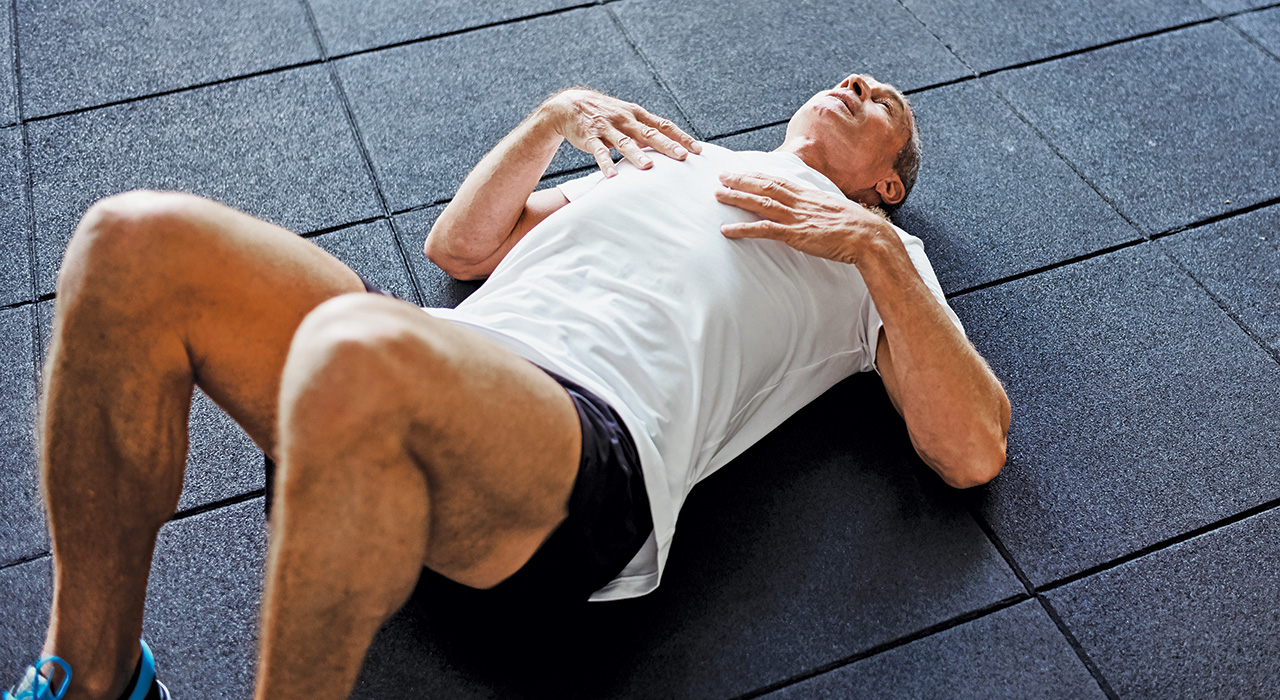Sit-ups and crunches, performed over time can play havoc with your spine and core strength. To get stronger and stay injury-free, you need to think smarter. Here’s how.
Never has there been a movement more beaten to death than the notion of core strength. ‘Will it work my core?” is a question bandied around just about every gym and it’s a small wonder endless rows of people are always slamming their abs with crunches. The real problem is that your abs are not the only part of your core, they are just one piece of the puzzle.
As you age, you naturally become less flexible and while you can keep up your flexibility to a certain degree, in general your ligaments and tendons are still getting shorter. This can make you shorter and creates that stooping posture you see folks in their golden years wearing. Now, that’s the bad news for us 40-plus guys. The good news is that you can get stronger in your core and there’s a more effective, efficient and safer way to do it than performing hundreds of sit-ups. To understand this, you need to understand the Serape Effect and what it really means for your core strength.
New kind of rotation
The serape effect is a rotational trunk movement that involves ballistic motions, such as throwing or kicking. It stretches these muscles to their greatest length in order to create a snap-back effect. When this tension is released, they shorten to complete the movement which sees a greater velocity created than when the muscles started from a normal resting length.
This works because the diagonal revolution of your pelvis before a powerful throwing action is crucial for generating maximum velocity. Without it, your pelvis will recoil and you’ll throw just far enough to make a four-year-old giggle. This is because your muscles don’t build up and release the energy – in the same way an elastic band won’t shoot off if you don’t pull it back – which means you can’t transfer the energy from your trunk into your arm.
To understand why, you also need to know that you have three planes of human motion in a forward direction: sagittal plane, lateral (frontal plane) and rotation (transverse). Your transverse plane or rotational plane is one of the most important and is all about your core and that doesn’t refer to the fancy six-pack either. It’s about the muscles underneath and surrounding that washboard gut that need attention.
The key muscles involved in the serape effect are your rhomboids, serratus anterior, external obliques and internal obliques. What about your abs? Well, they are part of your core, but not the whole core. To correctly identify your core, grab a crayon and draw a line from your left shoulder to right hip and then reverse it on the other side – its what we call your performance X. It is your core and is extremely important for everyone who wants to perform while being injury free.
As you get older you need to be activating your performance X (transverse plane) for good back health and overall fitness. You need to be activating your transverse abs which act like an internal weight lifting belt. It’s one of the few muscles that runs horizontally rather than vertically, and while it’s paper thin, it is a powerhouse of performance and strength.

The toll of time
When you were younger you could get away with not working it since you were probably stronger and more flexible. Sadly, most injuries happen in the rotational plane of motion. In your youth you could probably get away with unlimited crunches and leg raises, but you probably did not realize this was actually doing more harm than good because it was so specialized towards the up-and-down variety of motion.
Instead, the best way to strengthen the core is to work it as a whole, not just as a separate part in up and down motions. The more joints you can activate with each rep, the better prepared you’ll be for everything you want your body to do. Life too often involves getting stuck in an ice storm with a flat tire on a hill and having to sort the problem yourself so you’re not late for work. Are you prepared for that kind of strain? Follow the movement guidelines to make sure your core is ready for anything that the world throws at it.

The X factor
Best moves for genuine core strength
1. Medicine ball, weighted plate or dumbbell twists
2. Chops with a medicine ball
3. Single leg deadlifts
4. Big circles with a medicine ball, plate or dumbbell
5. Planks
6. Pull-ups
7. Shoulder rollouts
8. Arm walkouts
Moves older guys should avoid
1. Box jumps on hard surface
2. Really heavy deadlifts
3. Secure feet sit-ups
4. Leg raises
5. Traditional crunches
EXPERT: Kevin Kearns
Nutrition consultant, author of Always Picked Last and a strength and conditioning coach specializing in aging. He’s also founder of Beach Bod Dad Transformation (BeachBodDad.com)







